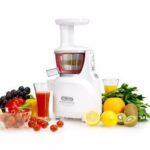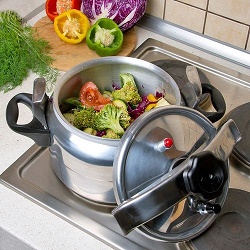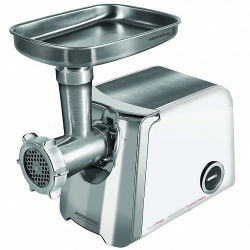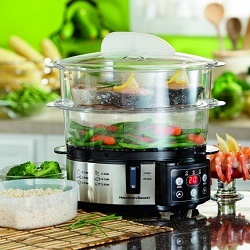Types and parameters of juicers for vegetables and fruits
It is impossible to imagine modern kitchen without a juicer for vegetables and fruits. Freshly squeezed vegetable and fruit juices are very important for good health and well-being, because they contain vitamins and trace elements necessary for the body. But in order for a juicer to be beneficial, it is necessary to choose it correctly, taking into account all the main points.
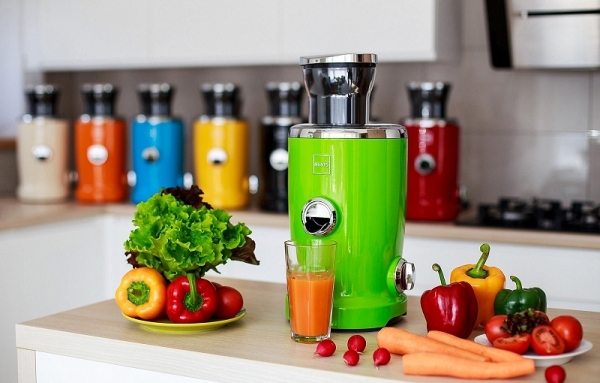
Types of juicers
Juicers are of the following types:
- Electric and mechanical. Electric models work only with the presence of electricity, but with their help you can quickly get the juice, even from solid vegetables. Mechanical models produce juice without electricity, but this will require considerable physical effort.
- Citrus and universal.Juicers can be designed or only for squeezing certain types of fruit (for example, citrus), or for most vegetables and fruits, that is, universal. In turn, all universal models are divided into 2 groups depending on how vegetables and fruits are ground in them: centrifugal and auger (more about varieties -most popular types of juicers).
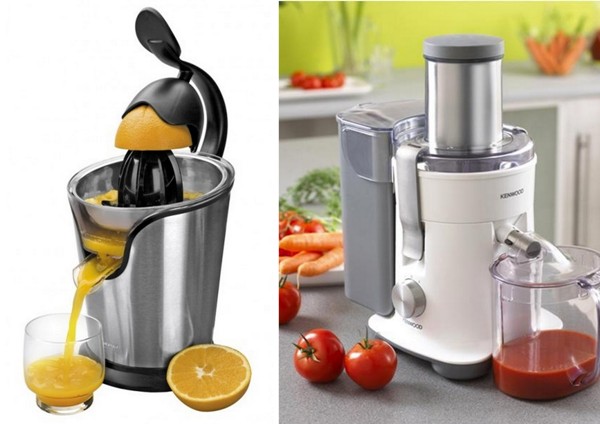
Centrifugal Juicers
Centrifugal models are considered traditional devices for home-made juice. In them, vegetables and fruits are first loaded into a vertical hole, and then pressed down by a pusher. After that, the raw material enters the rotating knives, where it is ground to a pasty state. During the process, vegetables and fruits, rotating at high speed, heat up and oxidize a little, form foam. The resulting juice is divided into layers - dark and light, saturated and unsaturated.
As a result of the heating of the juice, the amount of microelements and living vitamins is reduced, therefore such a spin is not the most useful, and taking into account modern technologies, it is considered even aggressive.
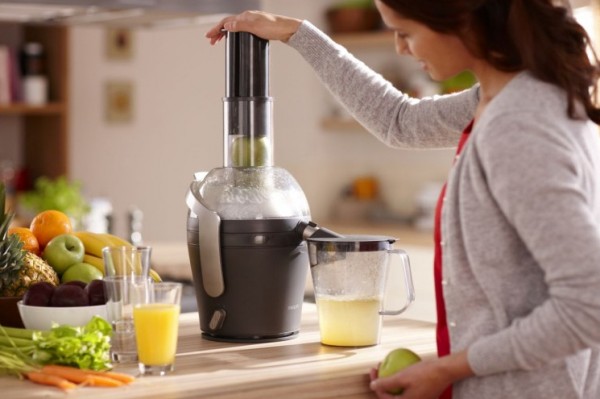
The centrifugal vegetable juice extractor is designed in such a way that there is a distance of a few millimeters between the grater and the pusher so that the graters with cells can rotate freely. The disadvantage of this design is that it is impossible to squeeze the juice from various herbs with it, in this case it is better to choose another model of juicer.
The separator usually has one of two geometric shapes: a wide cylinder or a cone. The separator of a cylindrical form represents a circle with sides. When the machine under the influence of centrifugal force begins to rotate, the raw material is pressed against the sides, in which there are many small holes. The finished juice flows out through these holes, and the cake accumulates and remains in the separator. In juicers with a cylindrical separator, a special mechanism is provided for dumping the cake, but it is often necessary to manually remove it. To do this, turn off the machine, remove the cover and remove the accumulated cake.
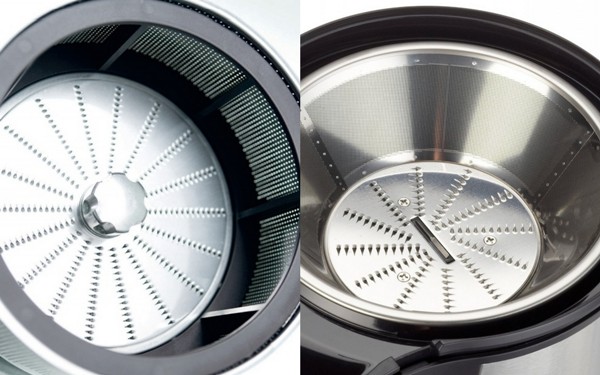
The cone-shaped separator has the function of automatically resetting the meal. When rotation takes place, the squeezed raw material rises to the edges of the cone, after which it is poured out of it into a special container.Thus, waste is removed automatically.
Centrifugal juicer models when working, they make a lot of noise and vibrate, but at the same time they allow squeezing juice from vegetables and fruits for a long time. Therefore, they are simply indispensable for processing large volumes of the crop and are the best for obtaining juice from solid fruits and vegetables for the winter period.
Auger Juicers
Auger Juicers for vegetables and fruits, they work according to a different principle: raw materials are crushed in them by pushing and further pressing. Such squeezing is considered careful, since the raw materials are crushed by a rotating screw, like meat in a meat grinder. And this happens without heating and oxidation, which means that all the vitamins are stored in this juice. A vegetable juicer of this design may even contain 2 screwswhich are used consistently. The cake passes into the separator, and then squeezed through a sieve.
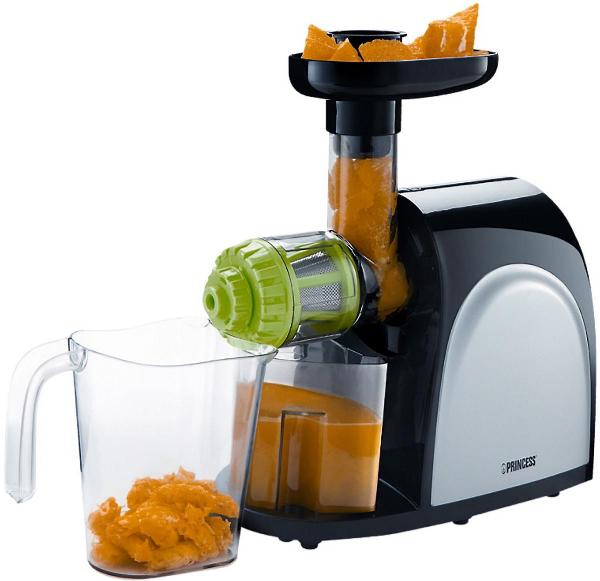
The advantages of such a machine:
- the rotating auger is quiet and consumes some electricity;
- screw juicers are able to squeeze juice from various herbs and greens, thereby using them you can get herbal cocktails, which are valuable suppliers of chlorophyll;
- only with the help of auger machines can you squeeze nuts and get nut milk, which is indispensable for the nutritional value of protein raw materials;
- screw machines are easy to clean, they are much easier to wash, as they do not have a cellular grater and a centrifugal separator, which need to be cleaned only with a special brush so as not to cut your fingers.
Screw machines are best suited for everyday juicing. They are best for obtaining juices from all types of vegetables, fruits, berries, herbs and nuts.
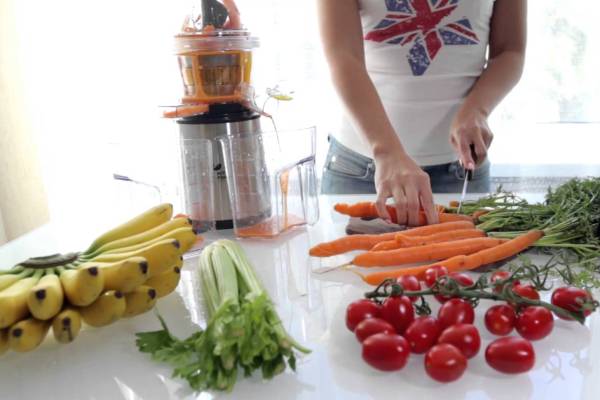
Citrus Juicer
The design of these models of juicers consists of a ribbed cone that rotates. In order to prepare the juice, you need to put half of the fruit (orange, grapefruit, lemon) on the cone and press down with a hand or a special mechanism. Fruit pulp will separate from the peel and fall on the strainer, and the juice will be collected in a special container.
This design is intended only for pressing citrus fruits. The cone can be of different diameter and height, depending on what kind of fruit it is intended for.Therefore, it is advisable to purchase a citrus juicer, which comes with interchangeable nozzles for different types of fruits.
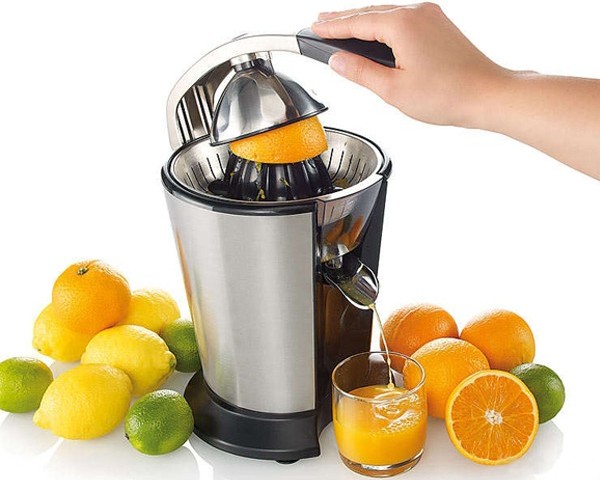
Also, when purchasing such a machine, you should consider some details:
- a juicer that has a pressure mechanism is safer;
- if in the model there is a reverse of the cone, that is, rotation in the opposite direction, then this will allow to get more juice from each fruit.
Juicer options
There are several options that you should pay special attention to when purchasing a juicer:
- Power - ranges from 200 to 1200 watts. Many manufacturers deliberately overstate the performance of power or indicate the maximum value instead of the nominal, although these are completely different indicators. Therefore, when checking the results may vary. But one should not buy a juicer only on the basis of capacity indicators, because it is necessary for home-made juices, and not for production in large quantities. At home, 600 watts of power will be enough for normal operation of the machine, the maximum is 900 watts.
- Drain the juice. There are cars with a special capacity for juice and without it, in the latter the juice is squeezed immediately into a glass.A juicer for vegetables with a capacity can take up a lot of space, so for a small kitchen it is better to purchase a model without container.
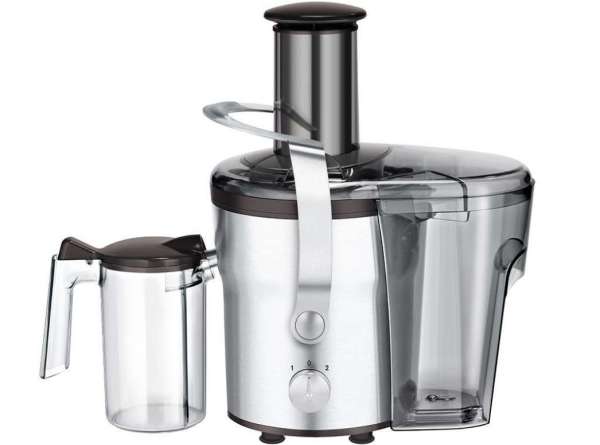
- The speed of rotation of the juicer is an important parameter, since not only the quantity but also the quality of the juice obtained depends on it. This figure is also often overestimated by manufacturers in order to increase sales. Normal is the work of the machine, if it makes 8000 rpm. Many experts believe that the slower the juicer rotates, the better the juice is produced. In this case, the fruit pulp does not fall into the juice. If you need a thick juice with pulp, it is better to buy a car with the highest rotational speed. Before using the juicer, it is imperative to study the instruction manual, which gives recommendations on the preferred rotation speed for certain types of vegetables and fruits.
- Material. It is necessary to pay attention to what the internal parts are made of, the centrifuge mesh. The best material is stainless steel. In addition, the grid should be thin and with many holes.
- The width of the loading opening.The wider this parameter, the easier it will be to prepare the juice. The average size of an apple is 6-7 cm in diameter. If the loading opening is smaller, pre-grinding of the fruit is required. The length of the hole is also important: if it is longer than the fingers of your hand, this will help to avoid accidental injury when pushing the raw material towards the rotating grater or auger.
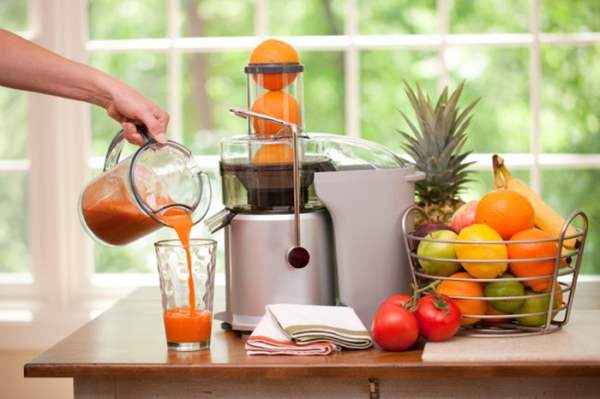
- Completion and capacity of the container for feeding vegetables and fruits. It is necessary to immediately determine what amount of raw materials will be laid in the car. In addition, you need to check the equipment: is there a pusher for raw materials, special brushes for cleaning the machine, what is the number of removable parts, etc. You should also check the length of the power cord: if it is less than 1 m, it will not be very convenient to use.
- Additional improvements, such as the function "Drop-stop", magnetic fuses from improper assembly, rubberized legs. The drop-stop function is a clip that covers the opening for juice extraction. Helps prevent dripping of juice on the table after the juice has already been made. Magnetic fuses will not allow the machine to turn on if it is assembled incorrectly.A rubberized legs will help the device to stay on the table, which is especially important for devices with centrifugal extraction.
Currently on the market there are many models of juicers from different manufacturers, and you can easily choose a device with the desired functions.

/rating_off.png)






